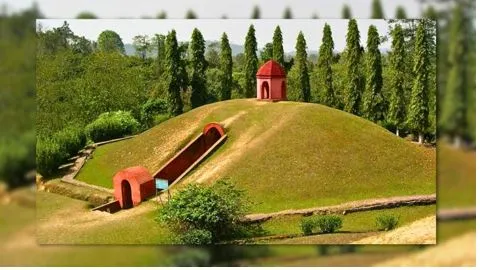

27th July 2024 (11 Topics)
Context
The Ahom dynasty's burial system, known as 'Moidams,' has been recognized by UNESCO as a World Heritage Site, becoming the 43rd property from India to be included in the prestigious index. This makes it the first cultural site from Northeast India to receive this honor. India is now at the 6th position globally for the most number of World Heritage Properties.
About Moidams:
- Moidams are unique pyramid-like burial mounds used by the Tai-Ahom dynasty that ruled Assam for about 600 years (from 1228 to 1826).
- Moidams are large, pyramid-shaped mounds made of layers of bricks and earth.
- They feature vaulted chambers with arched passages for entry. Each chamber has a raised platform where the body was placed.
- Burials: Objects like royal insignia, wooden, ivory, or iron items, gold pendants, ceramic ware, weapons, and clothing were buried with the deceased. Some Moidams also include human sacrifices from the Luk-kha-khun clan.
- Moidams are similar to ancient Chinese royal tombs and Egyptian pyramids in their use of monumental architecture to honor and preserve royal lineage.

About the Tai-Ahom Clan:
Assam’s World Heritage Site
|
More Articles


